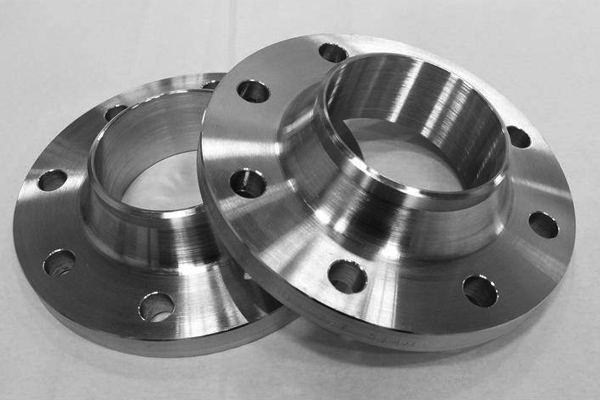Flange assembly, connection and maintenance there are holes in the flange, while bolts hold the two flanges together. Flange is sealed with a gasket. Flanged pipe fittings (lugs or connecting plates). Flange connects a pair of flanges, a gasket, and bolts and nuts. The gasket is placed between the sealing surfaces of the two flanges. After tightening the nut, the specific pressure of the washer surface reaches a certain value, and deforms and fills the unflatness of the sealing surface, thus making the connection tight and leakproof. Flanged connections are separable connections. According to the connecting part, it can be divided into container flange and pipe flange. According to the type of construction, there are integral flange thread flange. Common integral flanges are flat welding flanges and butt welding flanges. Flat welding flange poor rigidity, suitable for pressure P ≤4MPa occasions; Butt welding flange is also known as high neck flange, its strong penetration, suitable for high pressure and temperature occasions. Flange sealing surface has three kinds: plane sealing surface, suitable for pressure is not high and non-toxic medium occasions; Uneven sealing surface, suitable for slightly higher pressure occasions; Clamp groove sealing surface, suitable for flammable, explosive, toxic media and high pressure occasions.
Inadequate flange rigidity can lead to excessive warping and deformation, which is often a cause of seal failure. The shape and position of the flange sealing surface should match the gasket. The flatness of the sealing face and the perpendicularity between the sealing face and the flange diameter is to ensure that uniform compression of the gasket is reduced. Therefore, the effect of thermal expansion or eccentric force must be considered in design and installation. Otherwise, the flange will be tightly sealed and have consequences. Flange leakage; There are usually two ways of flange leakage: penetration of the gasket itself. ; The second type is the gap between the gasket and the flange sealing surface leakage. Leakage is caused by the continuous emergence of new sealing materials. In some specific working conditions, the leakage rate of flange connection can exceed the leakage rate of specific indicators; Or under specified leakage conditions, the flange connection can withstand specific operating conditions and meet the leakage rate of the index or specific flange connection conditions.
Gb flange and non-standard flange difference GB flange is produced in strict accordance with the requirements of the national standard flat welding flange. Companies or individuals often use non-standard flanges to save material or to obtain material on the spot. Standard flanges are usually 10mm smaller than those required by the national standard and 10mm thinner than those required by the national standard, which means they do not meet the requirements of the national standard and are therefore called non-standard flanges. Non-standard flanges also include flanges that meet customer requirements. Custom dimensions are also called non-standard flanges; There are also two standard flanges whose thickness and ratio are 3mm smaller and 3mm thinner than the national standard requirements. General purpose non-standard flanges and second standard flanges are cheap. It is usually sold in flange shops around the country. Of course, foreign shops are not physical flange manufacturers. It is suggested that the purchase price of physical manufacturers will be more competitive; National standard flange is generally used in petroleum, chemical industry, factories, machinery factories and so on.
Post time: Jan-05-2022

